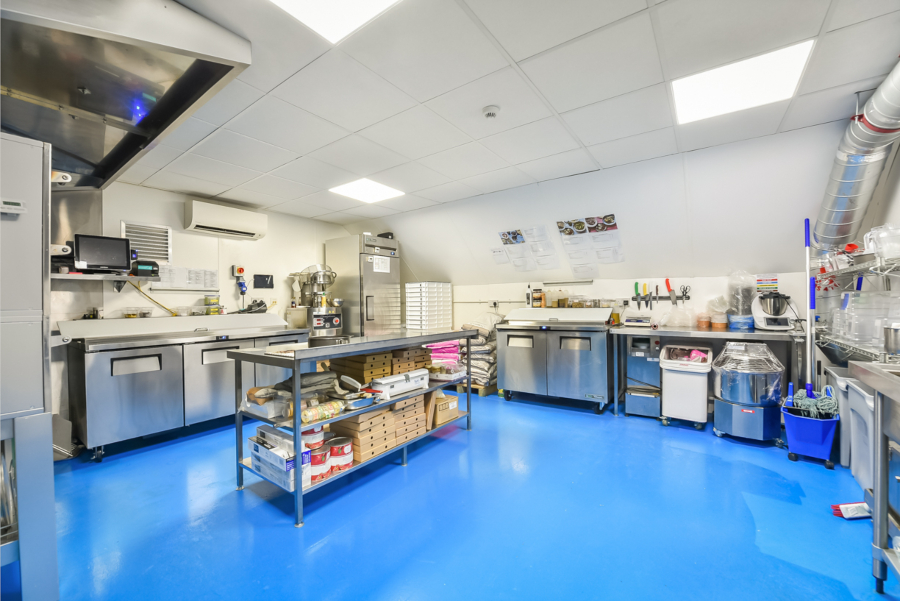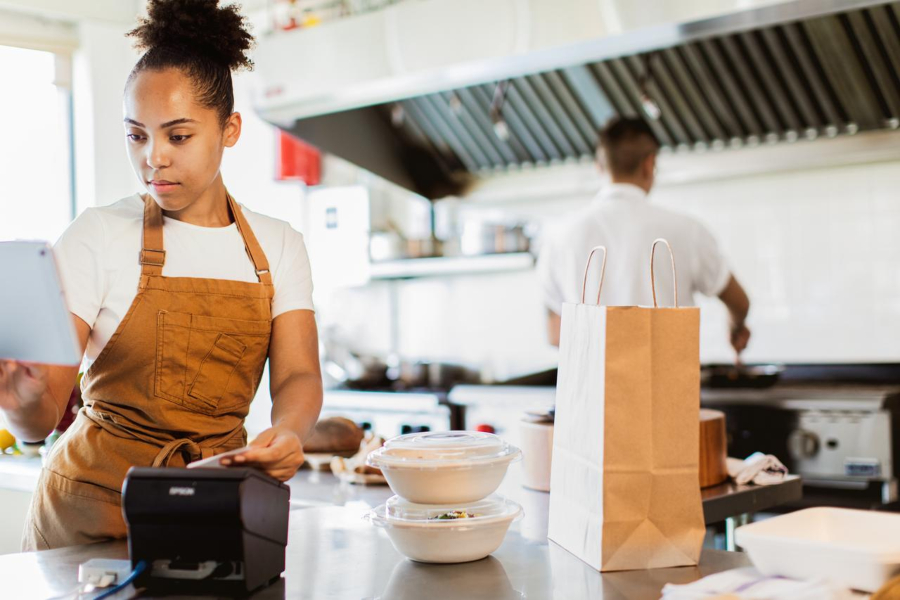After nearly two years of the COVID-19 pandemic, we are finding our way back to normality. However, COVID-19 variants loom large and have already led to an increase in restrictions. It’s hard to plan when we don’t know when restrictions could change, be it ‘stay at home’ recommendations or another lockdown. But thinking ahead could help your business to stay afloat and be more agile whatever the future holds.
For this post, we’re going to look at some of the ways you can prepare your food business in the event of further pandemic-related restrictions.
Be prepared by being informed
Information was released periodically during the pandemic by the government, offering guidance for food businesses on working safely during the pandemic, as well as how to adapt to the new rules. Although this information is considered no longer active, it is worth being aware of in case the restrictions are suddenly reactivated.
The volume of government information can be hard to absorb. Our guides provide a summary of the key financial and support information:
- Financial Support For Food Businesses During COVID-19
- What Support Is There For Food Businesses During COVID-19?
To remain an agile food business in the months to come, it’s also important to look ahead.
A thought experiment for what might happen
To help identify possible ways of preparing and adapting your food business, we recommend this thought experiment. Try to imagine what would happen in each scenario, how your business would be affected and what you could do to mediate a loss of orders or a change in customer needs.
There are two main scenarios that will affect food businesses significantly:
- if hospitality can no longer serve customers at their location (i.e. no seated patrons)
- if there is a complete lockdown
Let’s look at both and how your food business might adapt under these circumstances.
What to do if you can’t serve customers at your location
This is the first level restriction and the most likely. It will probably be introduced along with ‘work from home’ recommendations. If you are a cafe, restaurant or food stand, it will have a significant impact on your business. But, with some quick adaptation, you can keep serving customers, maintain your staff and minimise losses.
Switch to takeaway
Making the change to offer takeaway will require some forward planning, particularly if you don’t usually offer them. You’ll need to order in takeaway containers for food and drinks. Stocking up ahead of time will be important as a sudden change to restrictions will probably lead to a rush of orders. Order a batch before any changes if you can, then order more when you know restrictions are coming – on the assumption they might take a while to arrive.
When shifting to takeaway, make sure to let your customers know ASAP! You can’t rely on them wandering past and enquiring. Use signage on your windows, update your website and post on social media that you are offering COVID-safe takeaways.
If you are concerned about your food stocks and supplies during the switch to takeaway, consider reducing your menu to your most popular dishes and drinks. This will help you manage your cash flow and will mean you can keep supplying your regulars with their favourites.
Create ‘finish at home’ meal kits
‘Finish at home’ meal kits sprang into existence during the transition out of lockdown during the pandemic. The meals are part-cooked and prepared in such a way that means customers can pick them up at any time of the day and finish cooking them at home.
Meal kits proved particularly popular with local and upmarket restaurants, who wanted to keep selling their meals (and so clear their already purchased stock) with a focus on serving local customers close by. Meal kits come in a wide variety of formats suited to cooking at home, finishing at home and ready-to-plate so, depending on what kind of food business you are, there is an option to suit you.
If your meal kits really take off, you will be creating a new revenue stream that lasts beyond the pandemic – particularly as people intend to eat more meals at home in the future.
Start offering local delivery
One of the biggest impacts of not having dine-in customers is you need a lot less staff to get your orders out. As a result, you may think you have to reduce hours or lay off team members, but offering local delivery could be an alternative.
Offering local delivery, sent out by foot or bike by your team members, is a great way to keep your food business running. Anyone with a bike and a helmet can make deliveries, enabling you to circumvent the fees of delivery apps while adding a personal touch to your service. Plus, your staff stay working.
What to do if there is another lockdown
Another lockdown will most likely be the result of an increase in COVID-19 cases so make sure to keep an eye on the news. Lockdowns are much more serious for food businesses but there are still ways to adapt and stay afloat.
Expand your delivery options
Food delivery has been allowed to continue during all previous UK lockdowns, as its considered an essential service. This means if you are facing a significant amount of time unable to service customers at your location, you need to be considering all the delivery options available to your food business.
Sign up to all the delivery platforms
If you aren’t already on them, your first step should be to sign up to all the major delivery platforms. Namely:
As well as the major players, you should also investigate smaller, local providers, plus industry newcomers, such as Foodhub and Hungrrr.
Surviving the pandemic as a food business is about finding as many opportunities for sales as possible, so the more platforms you’re on the better. If you find you get a solid base of customers on one particular platform, consider upgrading your account to get in front of more customers and maximise your potential.
Consider moving/opening a new location near popular residential areas
Commercial kitchens, aka delivery kitchens or dark kitchens, have been popping up across major cities in the UK. At Foodstars, we choose the locations for our new kitchens based on how near they are to thriving residential areas.
Naturally, this is invaluable for food delivery as residential areas are where most people will be ordering food during a lockdown – business districts tend to become quiet very quickly. One of the ways your business can increase its food delivery radius is to open up or move to a commercial kitchen in another area.
For a restaurant or cafe, this can mean getting in front of a new demographic, keeping your food business going and potentially finding a new location to set up shop post-pandemic. For a food stall or other mobile food business, this is a quick and easy way to set up somewhere new with a similar built-in customer base. If your cuisine is niche or you have a special offering, investigate other food businesses nearby as you might have a USP that will draw in customers.
Keep an eye out for furlough changes and other financial support
Furlough, the financial support scheme that helped employers pay their staff during the pandemic, ended soon after the last lockdown. Should a new lockdown be announced, it is likely new furlough support, along with other financial and business aid, will be announced shortly after.
Likewise, grants and suspended businesses rate payments or rent freezes are likely to be introduced should there be another lockdown. These measures will help you provide security for your staff and minimise the financial impact on your food business.
We hope this helps you plan ahead
All being well, no further COVID-19 restrictions will be necessary. Should they be reintroduced, however, we hope this article has helped you consider some of the actions to take in advance to ensure you are prepared and ready to adapt. If you are interested in licensing a commercial kitchen with Foodstars, please do get in touch.


